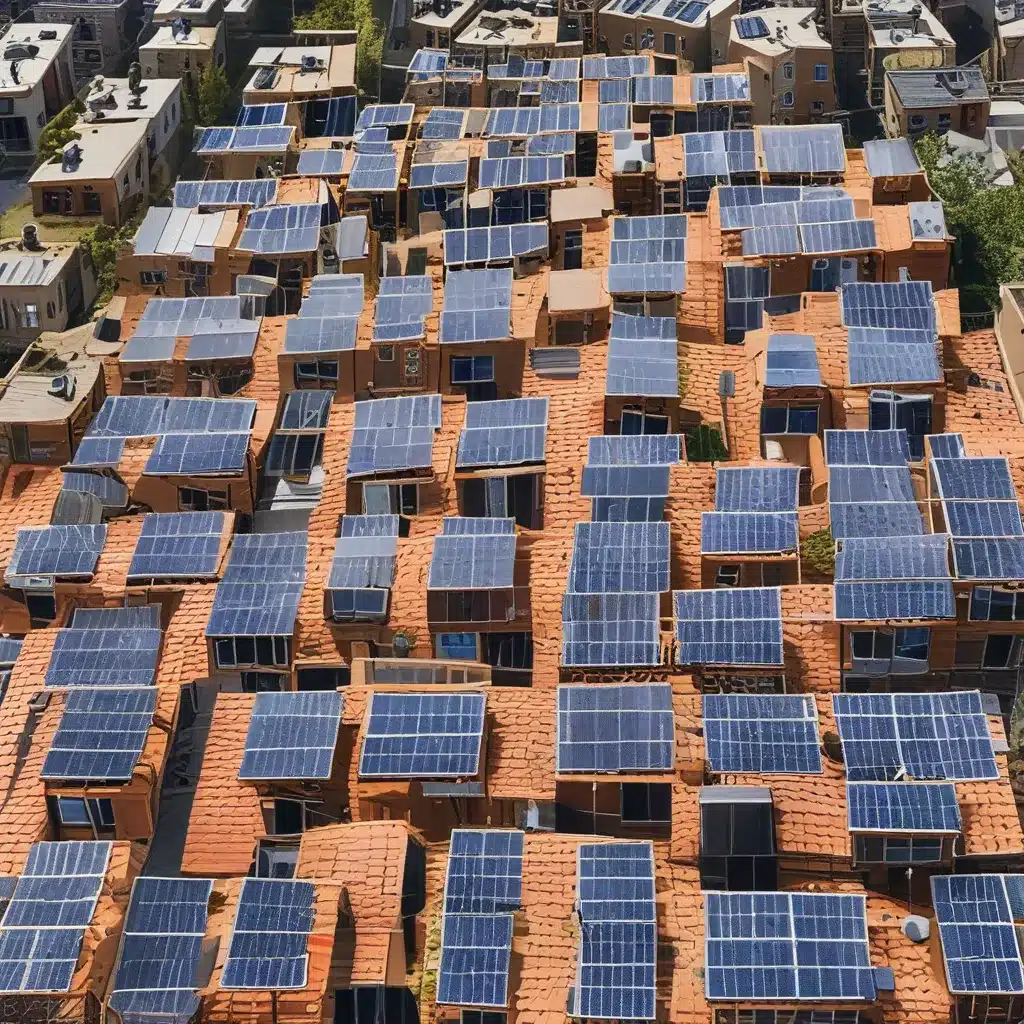
The Carbon Footprint of Solar Panels
As the world races to combat climate change, the push for renewable energy has reached a fever pitch. And at the forefront of this clean energy revolution is solar power. Rooftop solar panels have become an increasingly popular way for homeowners to not only save money on their electricity bills, but also reduce their carbon footprint.
But just how clean is solar energy, really? What is the true environmental impact of these photovoltaic panels adorning rooftops across the country? Well, let’s dive in and take a closer look.
According to the International Panel on Climate Change (IPCC), the lifecycle carbon emissions associated with generating 1 kilowatt-hour (kWh) of electricity from rooftop solar panels is a mere 41 grams of CO2 equivalent. To put that into perspective, that’s about the weight of a medium-sized chicken egg.
The emissions from rooftop solar are roughly 12 times less than natural gas and 20 times lower than coal in terms of CO2 emissions per kWh of electricity generated. In other words, that’s a whole lot of chicken eggs your rooftop solar is keeping out of the atmosphere compared to fossil fuels.
Putting Solar Emissions in Perspective
To really drive this point home, let’s put those emissions into a more relatable context. Imagine for a moment that each gram of CO2 equivalent was represented by a medium-sized chicken egg. Now, picture your fridge filling up with these eggs every time you used 1 kWh of electricity.
If you’re like the average American household, you use around 15 kWh of electricity per day. That means your fridge would be overflowing with 600 eggs every four days – the equivalent of your daily electricity use. And we’re not even accounting for the emissions from heating, cooling, and running all your other household appliances.
Yikes! That’s a lot of eggs to deal with.
But with rooftop solar, the emissions associated with your electricity use would be reduced to just 41 eggs per day. Suddenly, that fridge doesn’t seem quite so full. And unlike those fossil fuel emissions, which are constantly piling up, the carbon footprint of your solar panels is quickly offset once they’re up and running.
Reducing the Solar Carbon Footprint Even Further
Now, the IPCC’s figure of 41 grams of CO2 equivalent per kWh for rooftop solar isn’t set in stone. In fact, there are a number of ways we can further reduce the carbon footprint of these photovoltaic panels.
According to the National Renewable Energy Lab, the majority of a solar panel’s lifecycle emissions – around two-thirds – come from the manufacturing process. This includes extracting raw materials, producing equipment, and constructing the factories themselves.
But as we continue to transition to renewable energy sources to power these manufacturing processes, the carbon footprint of solar panel production will only continue to shrink. We’re already seeing companies repurpose existing infrastructure, like an old steel plant, into solar component factories. And researchers are exploring ways to recycle and upcycle waste materials from solar panel manufacturing to reduce the need for virgin raw materials.
On the operational side, solar panel efficiency and longevity are also improving all the time. The latest panels are lasting longer and producing more electricity than ever before. In fact, a 40-year-old rooftop solar system in Vermont is still operating at 92% of its original output.
And when it comes time to decommission those panels, the recycling industry is poised for rapid growth. Over 90% of the materials used in solar panels can be reclaimed and reused, further reducing their carbon footprint.
The Bottom Line on Rooftop Solar
The bottom line is this: while there is a carbon footprint associated with manufacturing and installing solar panels, the lifetime emissions of solar electricity are a mere fraction of what you’d get from fossil fuels. In fact, a typical rooftop solar system can offset its entire carbon footprint within the first 2-3 years of operation.
And with continued advancements in renewable energy-powered manufacturing, higher-efficiency panels, and robust recycling programs, that footprint is only going to get lighter. So if you’re looking to seriously slash your carbon emissions and do your part in the fight against climate change, rooftop solar is one of the most impactful steps you can take.
Sure, the upfront costs may be a bit higher than grid electricity. But with the money you’ll save on your utility bills and the environmental benefits you’ll be unlocking, the long-term value is undeniable. And let’s not forget – those chicken egg emissions are so much more appetizing when they’re not piling up in your fridge.


